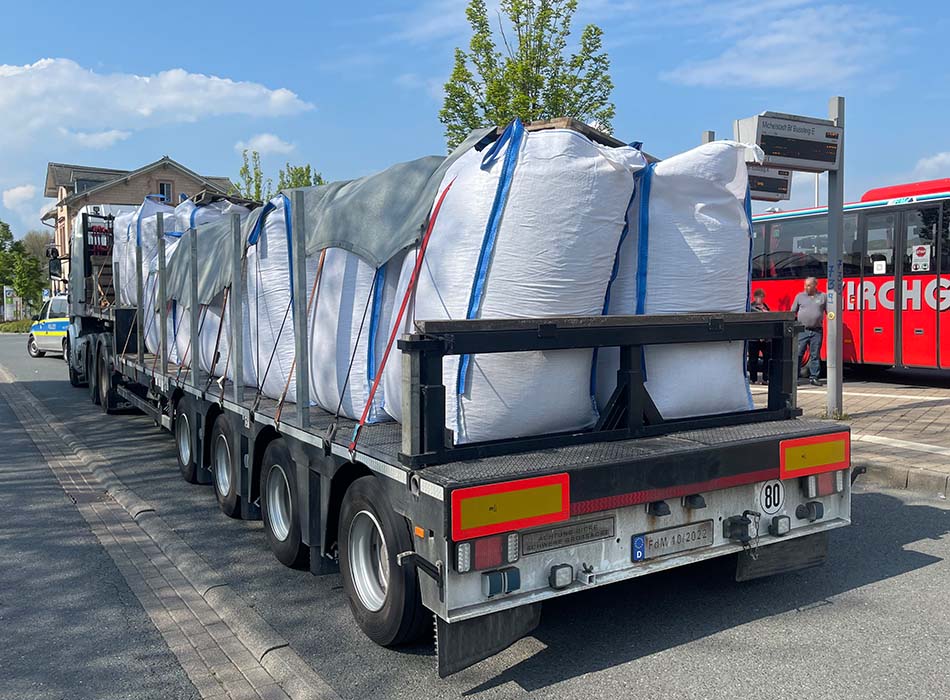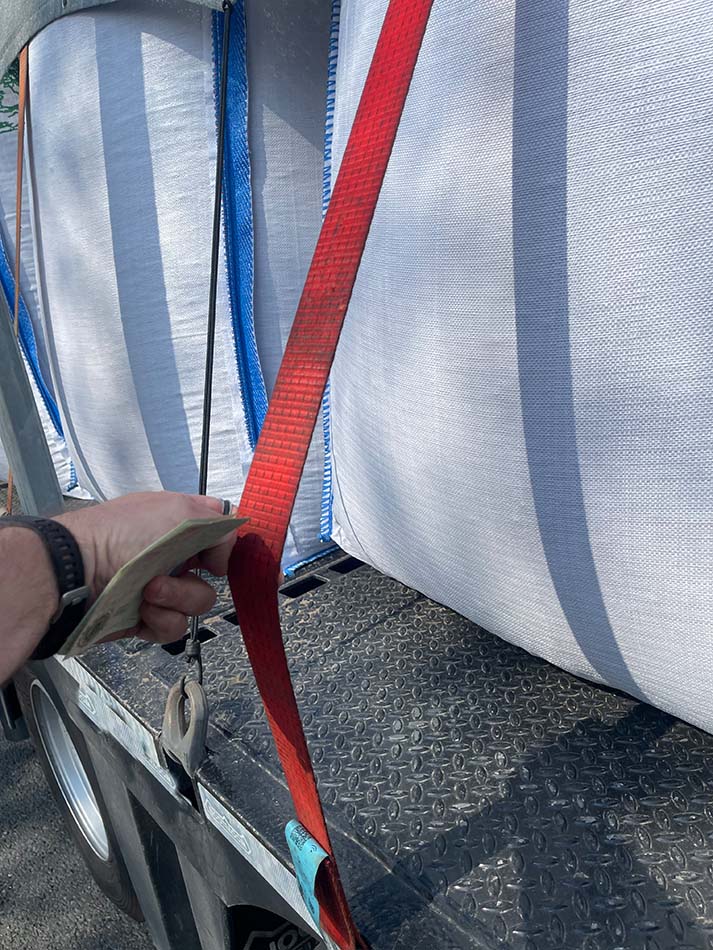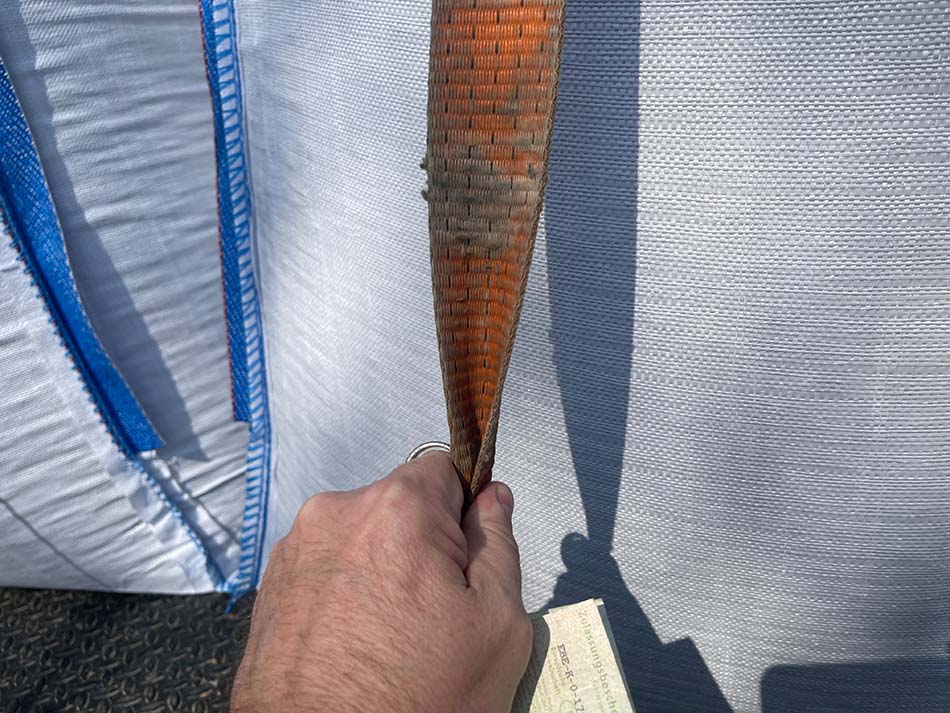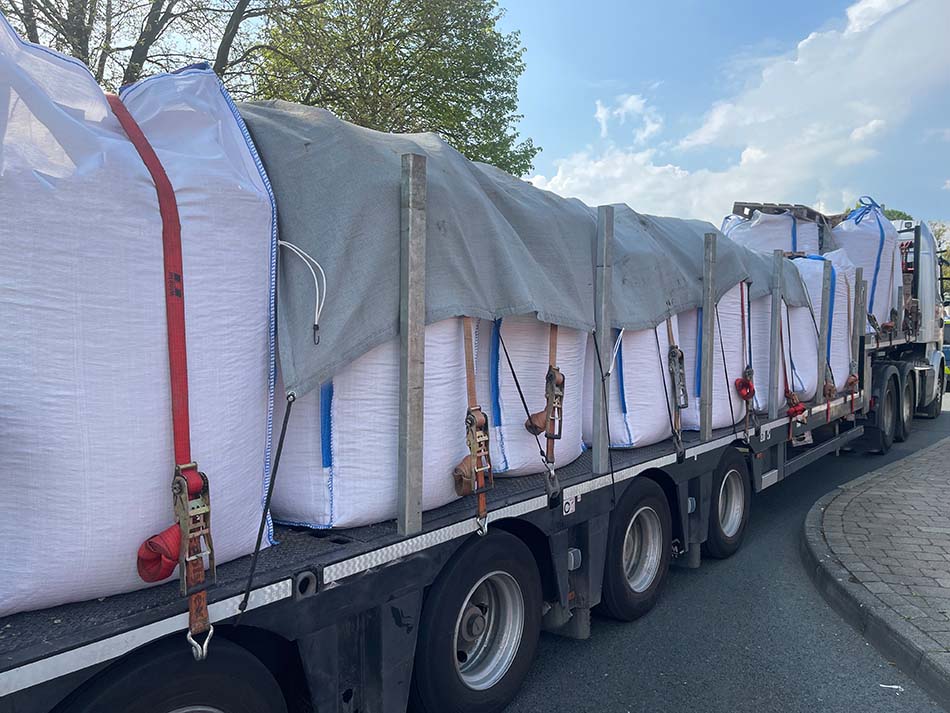| Photo of the month – October 2022 |
[German version] |
Large, heavy big bags are not easy to tame

Figure 1 [South Hesse Police]
The story is quickly told:
- 17 big bags containing ores of which we have no further details loaded onto a drop-deck trailer.
- Actual gross weight of the vehicle: 56t.
- The load is secured with tie-down lashings.
- The gray tarpaulins simply provide protection against the weather and are not used for securing, as one might suppose.
- The big bags standing on the loading bed at the bottom have a limited tight fit to the front. Limited because the cargo is very flexible and would become very compressed if subjected to a load.
- There is also a tight fit to the back, but the same applies as for the tight fit to the front.

Figure 2 [South Hesse Police]
There was almost no pre-tensioning force, which is the result of the loose nature of the load.

Figure 3 [South Hesse Police]
Big bags can generally not be secured with tie-down lashings, as the contents can become compressed or can move to either side of the belt. The consequence is always that the pre-tensioning force is lost, which in turn means that the securing is also lost.

Figure 4 [South Hesse Police]
The stanchions are more or less decorative. They are not being actively used to secure the load, and if they do have any effect, it is purely by chance. In this Photo of the Month, we shall merely mention, and not discuss in detail, the fact that the hooks on the belts are not suitable: They are attached directly to the vehicle.
And we shall also simply point out that the vehicle was overloaded by about 40 % or 16 tonnes.
How to secure the load properly:
How would we secure a load like this? There are many options, but all of them come down to securing the load as a tight fit.
- We prefer to use loop lashings. In each case, two lashings around four big bags.
- Anti-slip material can help, but is not strictly necessary if there is such a good tight fit to the front as in this example.
- If the load is soft enough to allow the belts to press deep enough into the load, no measures need to be taken to prevent them from slipping off.
- If they are not able to press deep enough into the load, measures need to be taken to prevent them from slipping off.
- One option would be to build some kind of restraint in the middle of the vehicle (similar to the securing arrangement at the back of the load (see figure 1), but of a more suitable height) against which it would be possible to load the big bags. If the loop lashings were to be passed over such a construction, they would not be able to slip off.
- Because the cargo can become very compressed when subjected to a load, artificial end walls that divide the load into three parts along its length would be a sensible idea. Such artificial end walls would be easy to implement on this vehicle, as it has stanchion sockets arranged laterally on the loading bed.
- On vehicles that do not offer this option, we again use loop lashings.
Your load securing columnists wish you a safe and secure autumn.
Back to beginning
